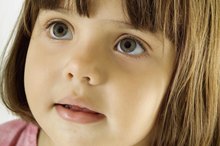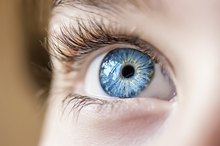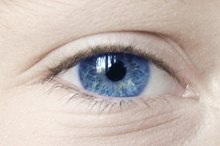What does fact checked mean?
At Healthfully, we strive to deliver objective content that is accurate and up-to-date. Our team periodically reviews articles in order to ensure content quality. The sources cited below consist of evidence from peer-reviewed journals, prominent medical organizations, academic associations, and government data.
The information contained on this site is for informational purposes only, and should not be used as a substitute for the advice of a professional health care provider. Please check with the appropriate physician regarding health questions and concerns. Although we strive to deliver accurate and up-to-date information, no guarantee to that effect is made.
What Causes Nystagmus in Newborns?
Nystagmus, a condition in which the eye has rhythmic and involuntary movement or oscillation, is often caused by an underlying neurological or ocular disorder. Congenital, or infantile, nystagmus will appear in the first few months of life and usually affects both eyes in a horizontal direction. This condition does not occur while the child is sleeping. You should contact your doctor if you think your child may have nystagmus.
Genetics
Genetics may be one cause of nystagmus in your newborn. Congenital nystagmus may be transmitted genetically as either an X-linked recessive trait or an autosomal recessive or dominant trait. Albinism is an X-linked trait, and Leber's amaurosis is an autosomal dominant trait. Albinisim is an inherited condition, present at birth, in which the body has a lack of melanin, the pigment that gives color to the skin, eyes and hair. According to Encyclopedia of Children's Health, everyone with oculocutaneous albinism experiences nystagmus 1.
- Genetics may be one cause of nystagmus in your newborn.
- Albinisim is an inherited condition, present at birth, in which the body has a lack of melanin, the pigment that gives color to the skin, eyes and hair.
Visual Deprivation
Weight Loss and Sunken Eyes
Learn More
The most common cause of nystagmus in infants is due to visual deprivation. Visual deprivation includes glaucoma, retinal detachments and cataracts. Glaucoma is a group of eye conditions resulting in optic nerve damage, causing a loss of vision. In retinal detachment, the retina pulls away from the blood vessels that supply oxygen and nutrients to the retina 2. This may lead to permanent vision loss. A cataract is the clouding of the eye lens, which causes sight to become dim or blurred. If your infant is born with, or develops any of these conditions, it is possible your newborn will have nystagmus.
- The most common cause of nystagmus in infants is due to visual deprivation.
- Glaucoma is a group of eye conditions resulting in optic nerve damage, causing a loss of vision.
Developmental Abnormalities
Other causes of nystagmus in infants are coloboma and achromatopsia. Coloboma is a condition in which the eye does not form completely. Achromatopsia is a condition in which the infant cannot see color. Either of these conditions may result in your newborn having nystagmus. Another cause of nystagmus is down syndrome. Children with Down syndrome are at higher risk than other children of developing this eye condition.
- Other causes of nystagmus in infants are coloboma and achromatopsia.
Related Articles
References
- Encyclopedia of Children's Health: Nystagmus
- Mayo Clinic: Retinal Detachment
- Eggers SDZ. Approach to the examination and classification of nystagmus. J Neurol Phys Ther. 2019;43 Suppl 2 Supplement, Special Supplement: International Conference on Vestibular Rehabilitation:S20-S26. doi:10.1097/NPT.0000000000000270
- Kang S, Shaikh AG. Acquired pendular nystagmus. J Neurol Sci. 2017;375:8-17. doi:10.1016/j.jns.2017.01.033
- Serra A, Chisari CG, Matta M. Eye movement abnormalities in multiple sclerosis: Pathogenesis, modeling, and treatment. Front Neurol. 2018;9:31. doi:10.3389/fneur.2018.00031
- Kruijt CC, De wit GC, Bergen AA, Florijn RJ, Schalij-delfos NE, Van genderen MM. The phenotypic spectrum of albinism. Ophthalmology. 2018;125(12):1953-1960. doi:10.1016/j.ophtha.2018.08.003
Writer Bio
Lindsay Tadlock began writing in 2010. She has worked as a personal trainer for over three years and shares her fitness and nutrition knowledge in her writings. She graduated from Texas A&M University in 2000 with her Bachelor of Arts in finance and worked for seven years as a commercial lender.








